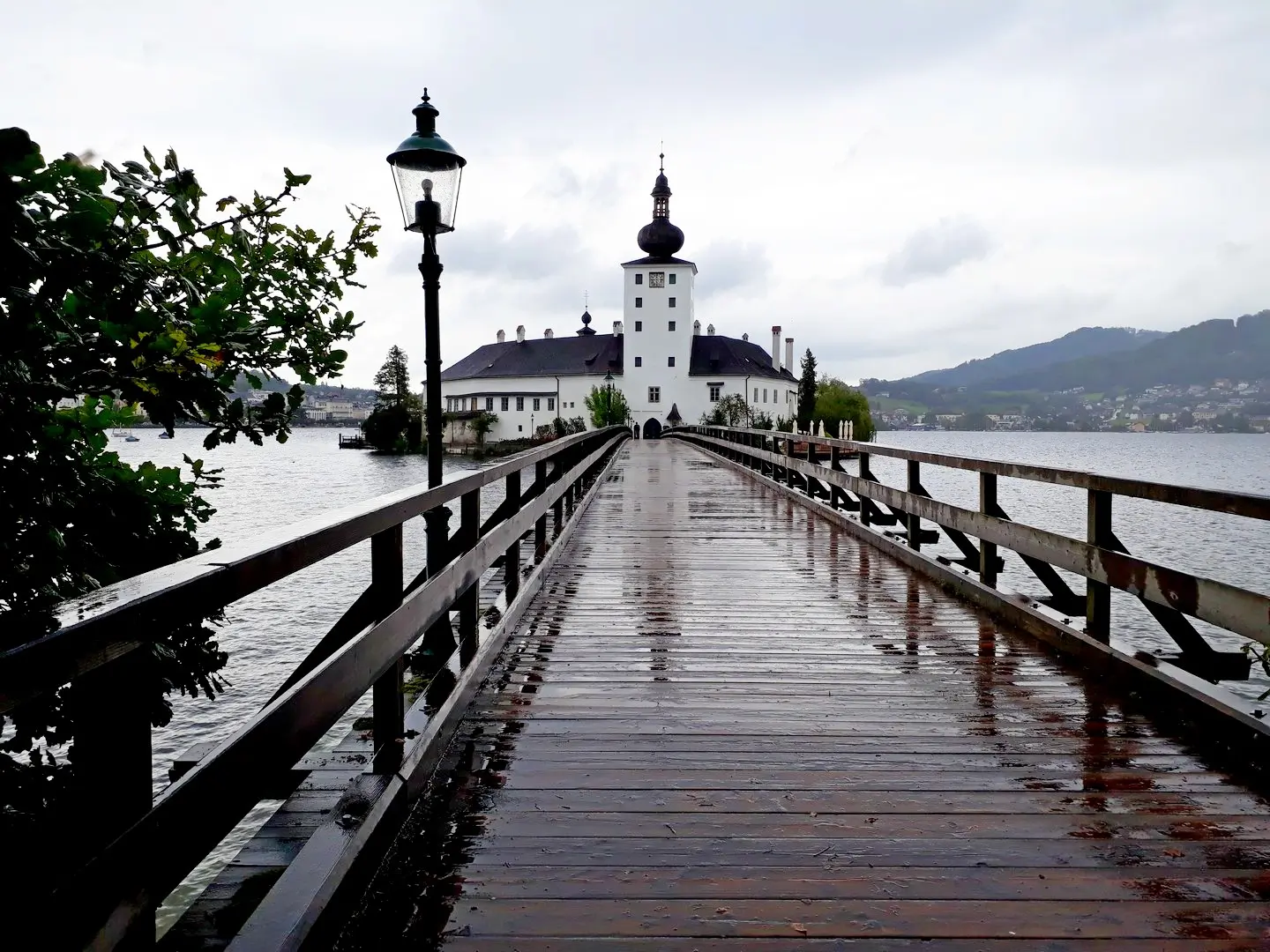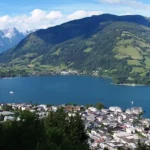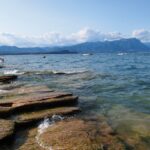Last Updated on 01/08/2023
Gmunden is located on the edge of the Salzkammergut. A little further – and already the mountains come to an end, industrial zones begin, highways intersect around Wels. But in Gmunden you still enjoy the mountain scenery.
Gmunden is suitable as a base for exploring the region around Traunsee, Bad Ischl. It’s not near to Hallstatt for day trip, although it is still possible. But for a real exploration of the mountainous part of the Salzkammergut, it is better to find an accomodation closer.
Hallstatt Town,
History and Museum Hallstatt, Salt mines
Echerntal waterfalls, glacial garden,
Dachstein Krippenstein, Dachstein Caves
Bad Aussee Lakeside. Lake Grundlsee, Lake Toplitz, Lake Altaussee
Gosau
Map of sights Salzkammergut
Salzburg old town
Salzburg Hellbrunn palace, museums
One feels that the city has known better times: in the center there are baroque facades and rich hotels, but a little to the side – abandoned places and endless construction sites. However, perhaps this was just a bad year: a corona and hail the size of a tennis ball, because of which a third of the roofs were covered with plastic.

Gmunden is the largest city on Lake Traun. Although in reality it is small – only 13 thousand of the population. It is connected by a railway to Bad Ischl and Linz. It is quite possible to go to Salzburg on a rainy day.
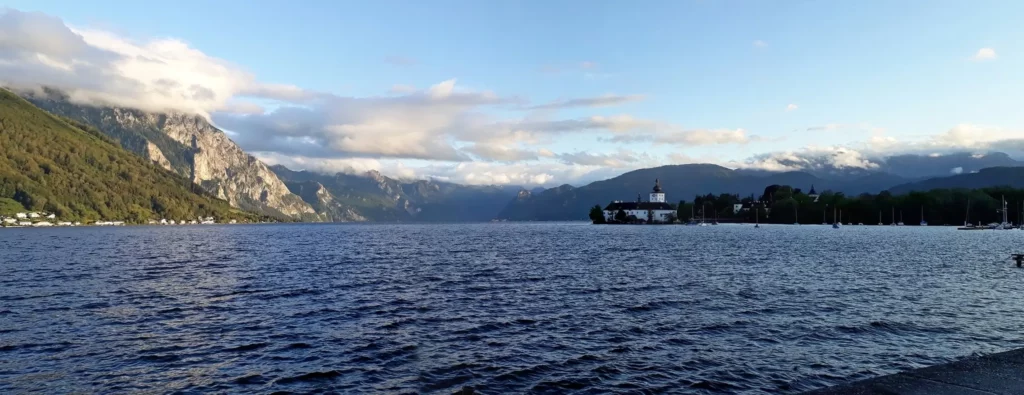
A little history
The history of the town reflects the history of the region. The first population was fishermen, they built houses on stilts and serviced the transport of salt from Hallstatt. The Illyrians were driven out by the Celts, and the Celts by the Romans. The Bavarians followed them.
As the importance of the salt trade grew, so did the importance of the local monastery in Traunkirchen. The salt trade attracted other traders as well, and the waterfall on the Traun River just downstream required the transfer of goods from water transport to horse-drawn transport. By the 12-13th centuries, a fortified market town appeared on the site of the village. The city was small and for a long time did not even have a church, only a chapel. However, as an important point and place for collecting toll, there was a customs and a court.
The name Gmunden comes from Gemünde – the place where the river flows out of the lake.
In the 15th century, the city gained importance thanks to the visits of the emperors Frederick 3 and Maximilian 1, who loved to hunt and rest here and came with their courtiers.
The 17th century for the city was a terrible time of the rule of Bavaria, which ruined it (Bavarians – Catholics, in Gmunden – Lutherans).
In the 18th century, the city became a huge garrison due to the War of Succession, and then the French appeared.
In the 19th century, everything finally calmed down and another war broke out: the spa war with Bad Ischl for high society and artists, among whom the therapeutic salt baths became very popular. 1862 became the year of official recognition as a spa town.
World wars spared Gmunden – it was not bombed, but it was completely occupied by the wounded and refugees.
What to see in Gmunden
Attractions in the city include
a former castle on the water,
a small old center,
a newly reconstructed cable car to Mount Grünberg with a range of entertainment,
and hiking trails on the left bank of the lake around Mount Traunstein.
Gmunden ceramics
We didn’t really appreciate two attractions: the local tram and the local famous ceramics.
The tram is presented as unique – where else can you see a tram that runs through fields and villages? (the advertising asks) Since we have the same in front of the window at home and it connects more interesting villages, we did not notice the uniqueness. What cannot be taken away from it is the tram with the steepest rise in Austria (10% on the way to the station).
The ceramics were shown at the factory. The prices are exorbitant – 15 euros for a coffee cup, another 15 for a coffee saucer. The rest of the prices are even higher.
The price is due to handicraft and local materials. The latter explanation seems senseless (local clay, logically, should be cheaper). Handicraft is primitive – there are mainly stripes als patterns.
These dishes reminded me of faience mugs in the village by grandmother – with cracks in the glaze inside and the inability to wash off the tea plaque with your hands. Since there were such cups in the apartment, I was convinced that the difference with the rustic faience is only in the price – there are also cracks here and also impossible to wash.
So it’s only worth buying if you true admire it. But you can visit the factory (including production with a guided tour). For about the same cost as the finished product, you can create your own masterpiece by painting a saucer, cup or other option. At least it will be individual. Your masterpiece will be sent by post or you can pick it up yourself. The production time varies depending on the workload of the staff – from a week to three.
Center and monastery
The historic center on the small hill is not big.
Church is of the first half of the 14th century. Inside there is an interesting altar and Madonna (made, of course, of ceramics). Residents believe that Madonna saved them from the bombing.
The street leading to the church is the oldest street in the city – Kirchengasse. Salt suppliers (Salzfertiger) lived here. A distinctive red house with a turret is one of the oldest houses in the city, 15th century.
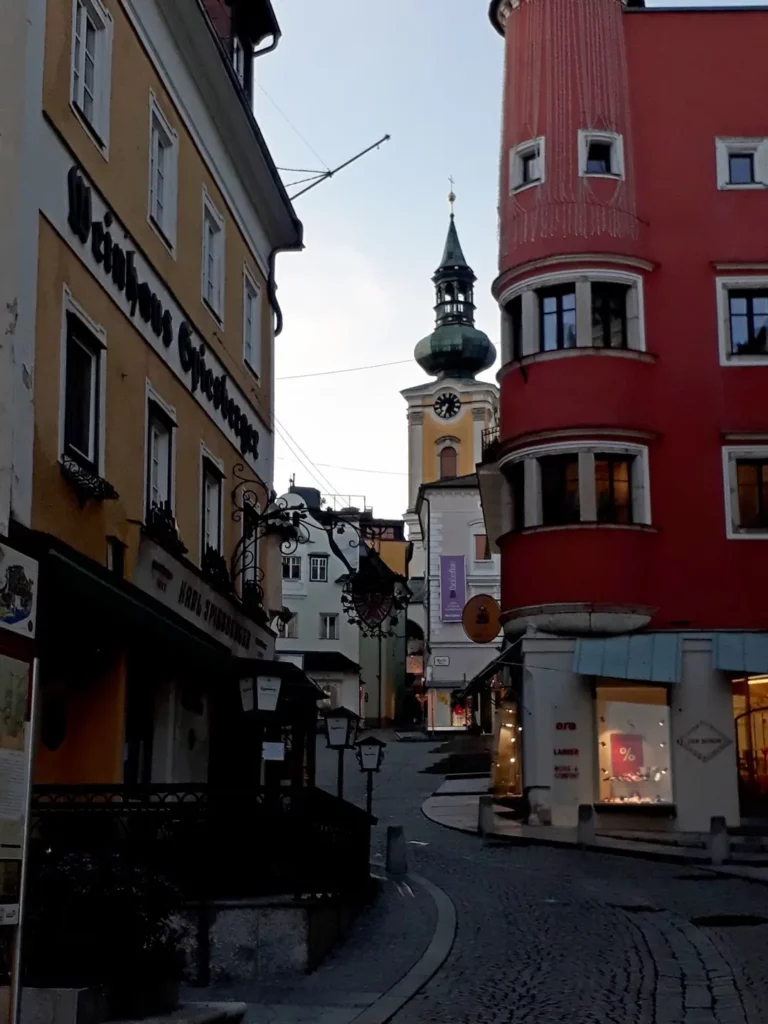
Kirchengasse leads not only to the church, but also to the Market square (Marktplatz). It is curious that both the market and the town hall are now not on this square, but on the riverside. And the square, full with cars, now looks nothing like the main square of the city.
A couple more lanes back and forth – and the old center ended. We go downstairs.
This is the home church of the workers of the salt traders supervision office, in which they were buried. It has been mentioned since the beginning of the 14th century. The office is called Kammerhof. Now there is a Museum of Hygiene and Sanitation – an exhibition of old toilets and sinks.
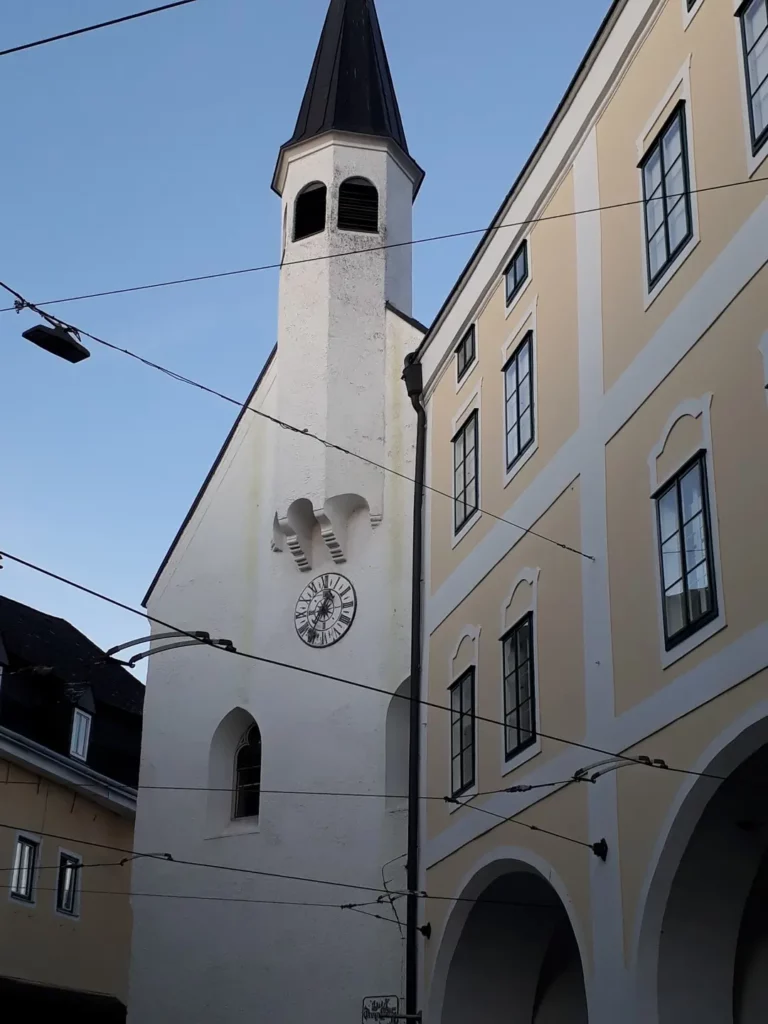
There are many old houses on the street nearby. One of them also hides a courtyard with arcades (16th century, Kammerhofgasse 3, Arkadenhof). The house has a signboard with a pointer.
Finally we get to the town hall. The exact time of construction is not known, but in the 16th century it already existed for sure. The style is the Renaissance, and from the appearance of the central part, one can assume that the city was even spent money on an Italian master.

Follow me
Do you have any more questions? Use comments ⇓ or private communication form ⇨
A funny story with bells installed in the second half of the 20th century at the expense of residents. It was originally planned that the bells would be made of local ceramics. But the result somehow did not ring. So they had to order the bells in Meissen. These bells ring, and even not bad, only the sound resembles a knock on faience night vases. Very original.
On the whole, it is a very elegant building, which does not fit very well with the large, more modern buildings standing on the shore behind it.
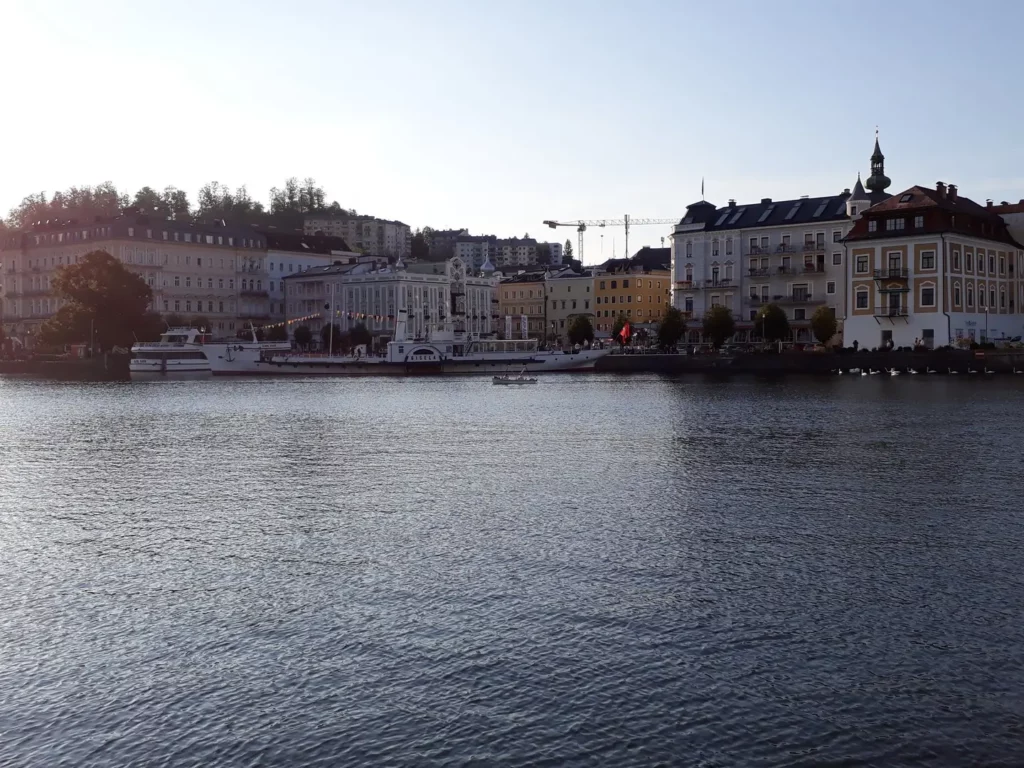
The steam paddle Gizela is parked in front of the town hall. The steamer runs on Sundays and on request.

The rest of the boats are small. For example, this one walks regularly to local villages.
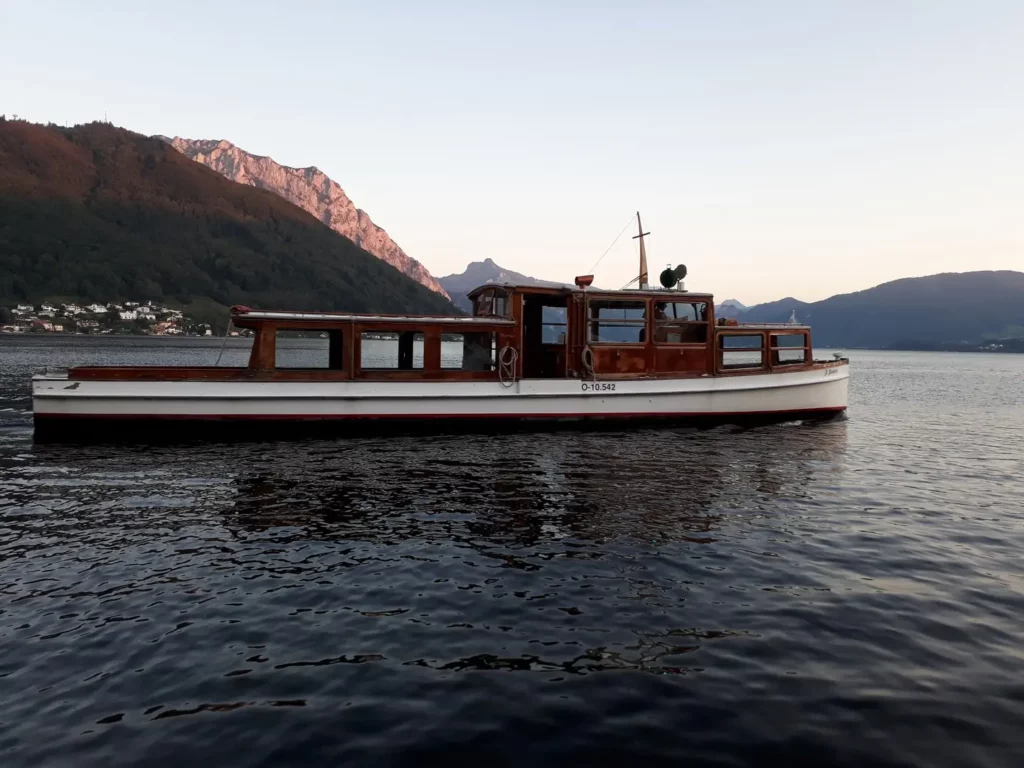
The long pier is ideal for walking, and the local authorities are even trying to make it as interesting as possible.
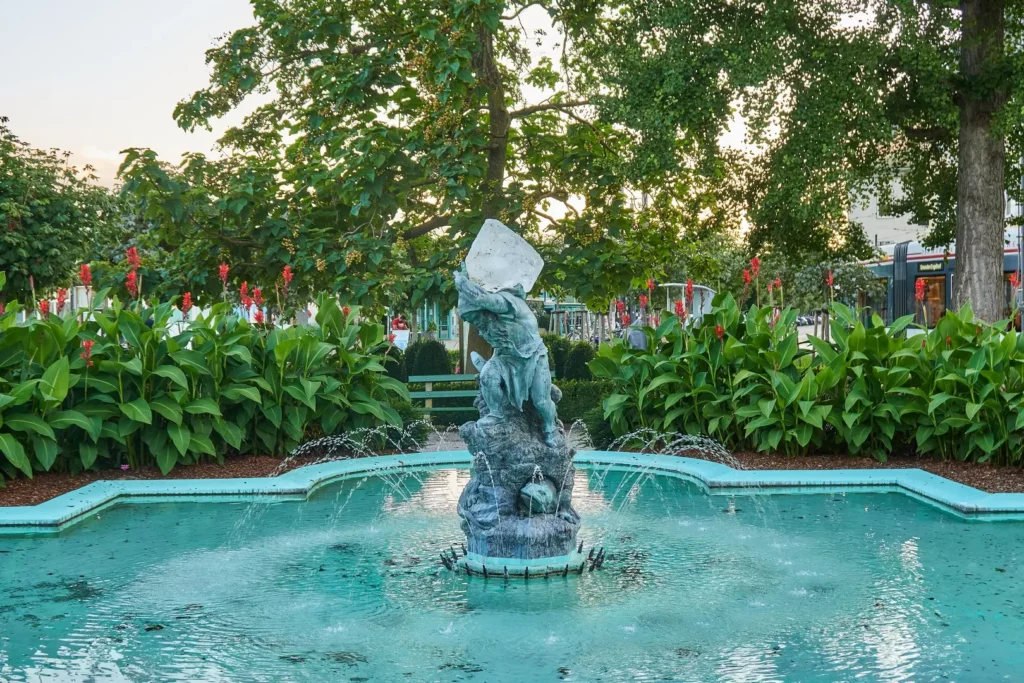
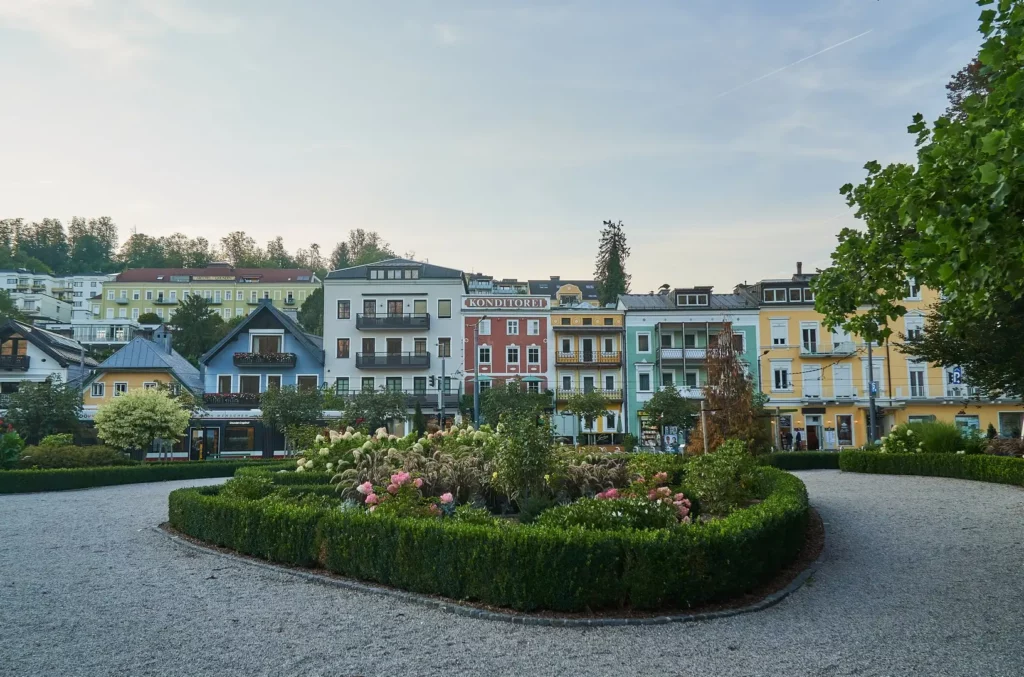
The swans by the coast are a symbol of the city, just like Ort Castle. Somehow, swans appeared on the lake in the 19th century. The locals were delighted. The Archduchess decided to bring several couples to a villa on the Tuscany Peninsula. Swans took their place in city life and were supported by the resort office. The number of birds is constantly changing, sometimes it even reached zero. The floods destroyed the nests, the ship will crash with fuel, then the spoiled corn was be fed…

Along the shore you can walk to the turn of the lake, that is, the entire northern shore of the lake is a continuous embankment.
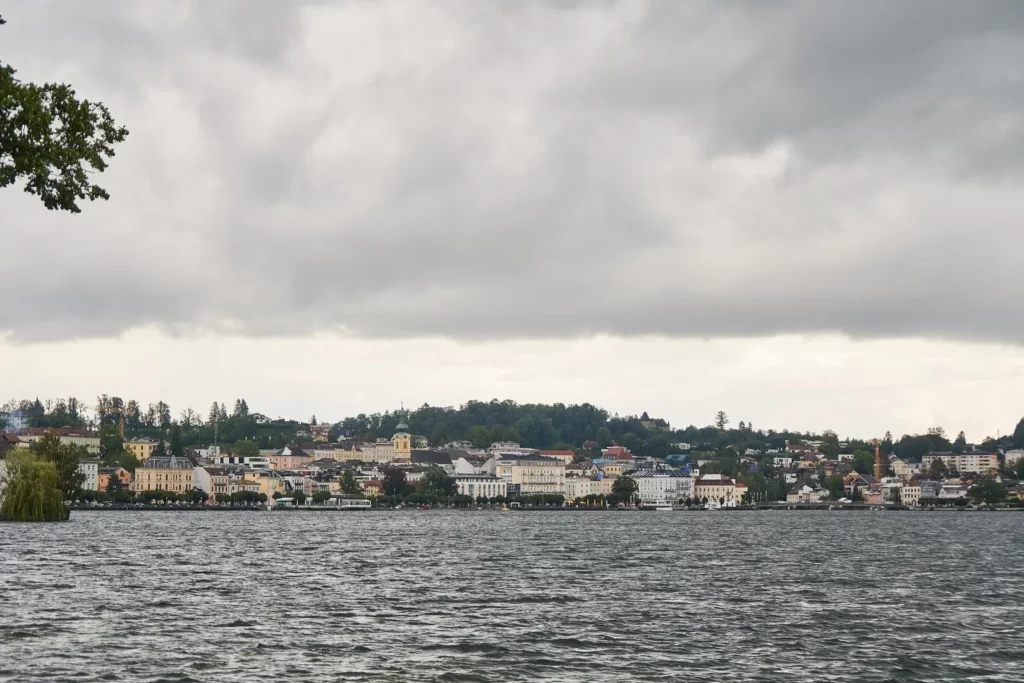
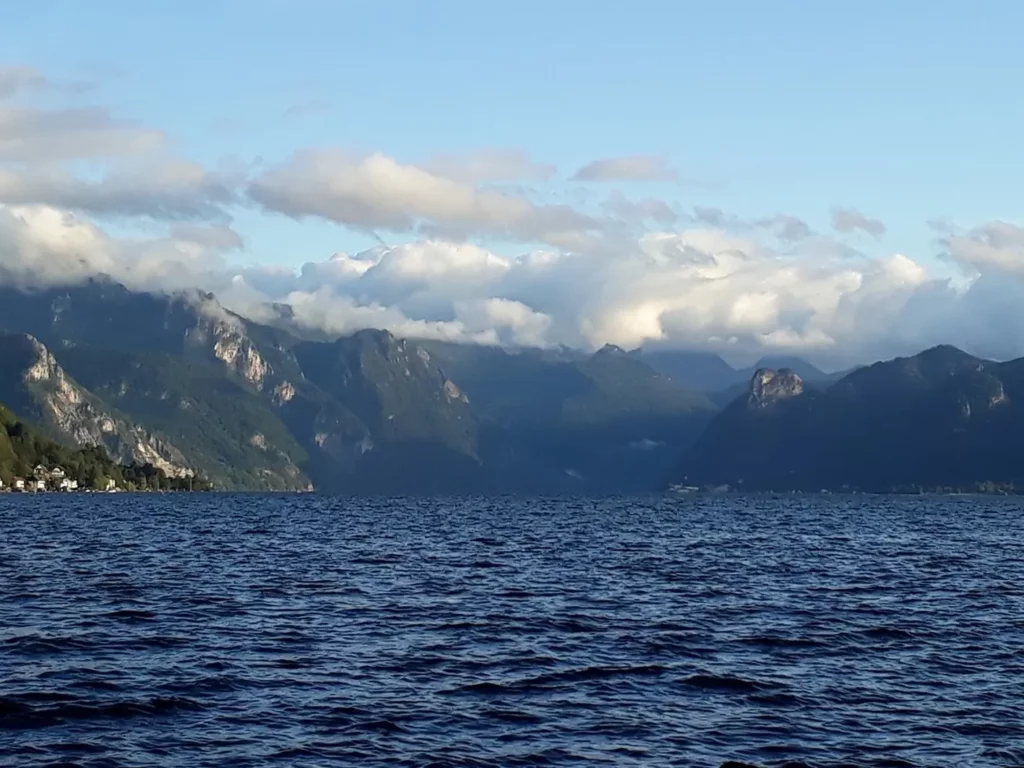
Ort Castle (Seeschloss Ort, formerly spelled Orth) is one of the oldest buildings in the city. It has been known since the 10th century and is believed to have been built on the ruins of a Roman fortification. It was originally a fortress on the water, owned by the margraves of Orth. In the 15th century, the castle passed to the Kaiser and he added a high tower. A century later, the city bought the island, but could not bear the too high prices and sold it back to the Kaisers.
After the domination of the Bavarians, which was difficult for the locals, the castle returned to the Kaisers again. And another sale ended with the return of the castle to the crown. There were various organizations there until the city bought the castle at the end of the 20th century.
The city uses it for various events. Inside there is a small historical museum with a short opening time, which, in general, speaks of its quality. The castle gained particular popularity thanks to the TV-series “Castle-Hotel Ort”.
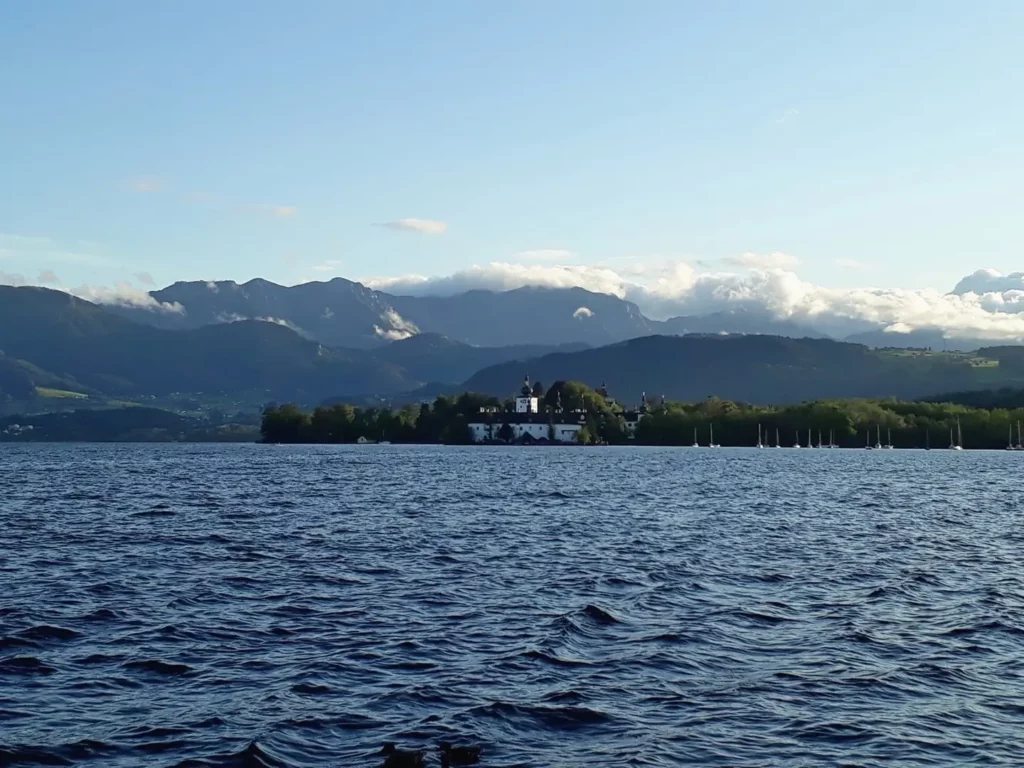

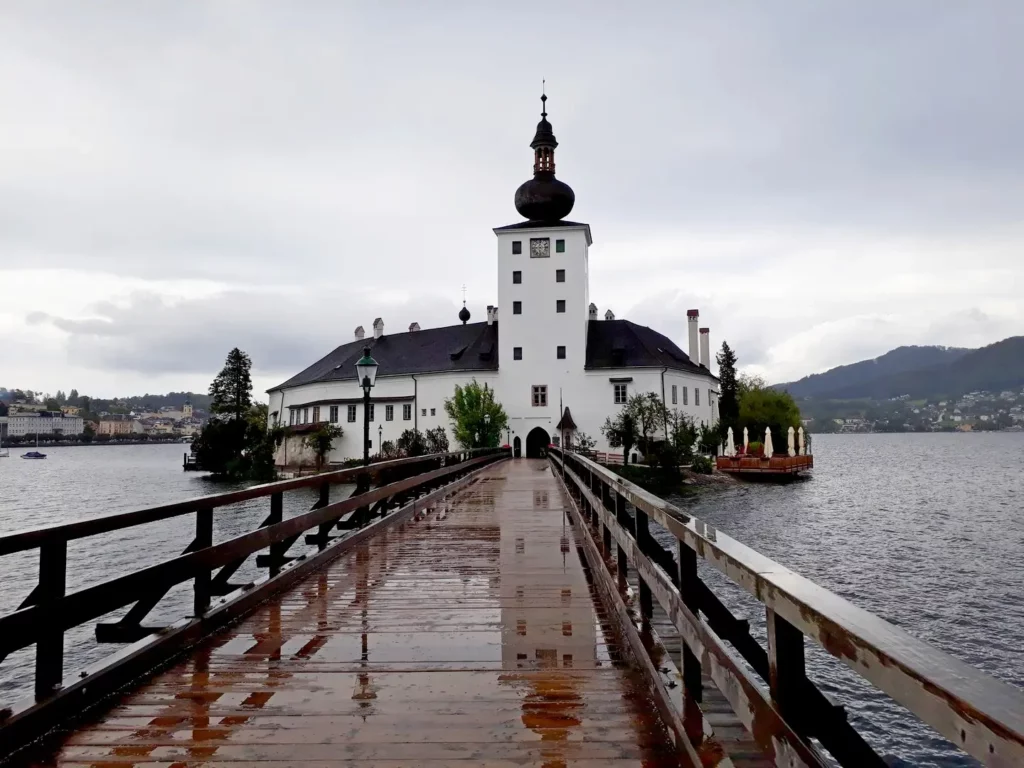
Opposite the island is the Tuscany Peninsula. In the 17th century, the Bavarian count built a larger and more comfortable castle there, which, in contrast to the Seeschloss Ort, is called Lanschloss Ort. All furniture and art objects were auctioned off in 1913, and the castle housed a forestry school. The building is now used for continuing education courses.
There are also a couple of villas and a simple park on the peninsula that are not worth your precious time
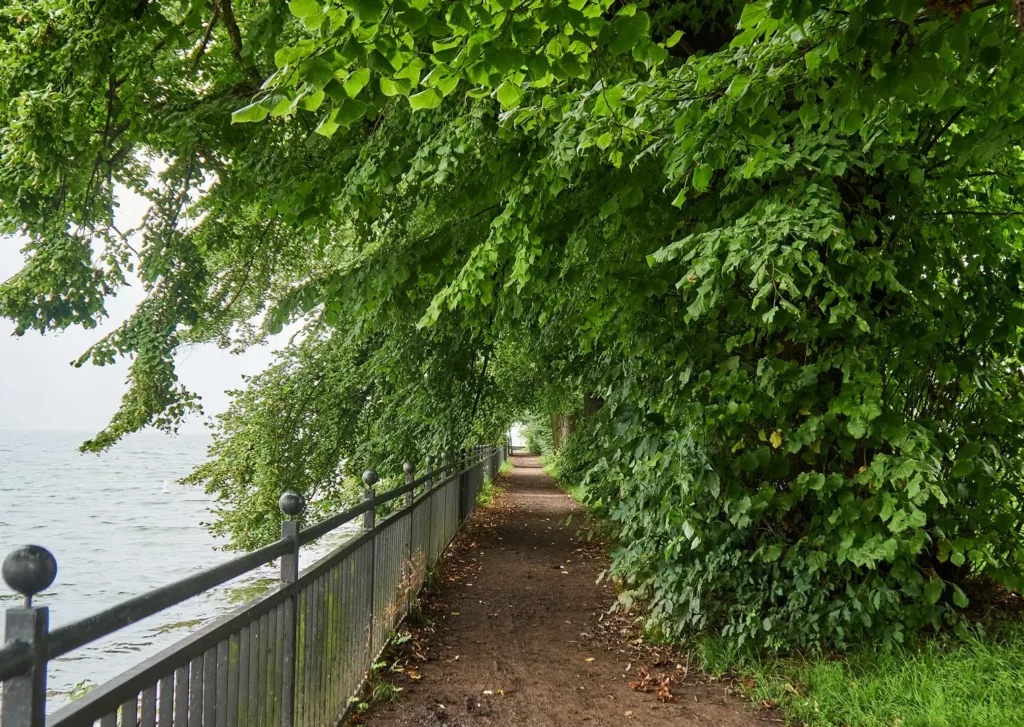
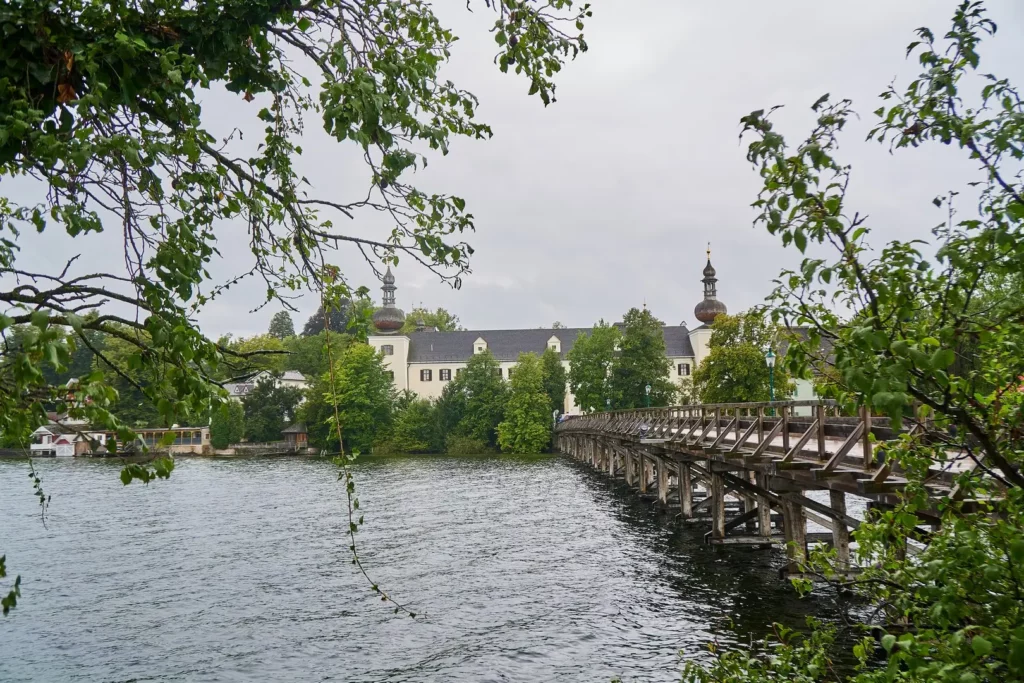

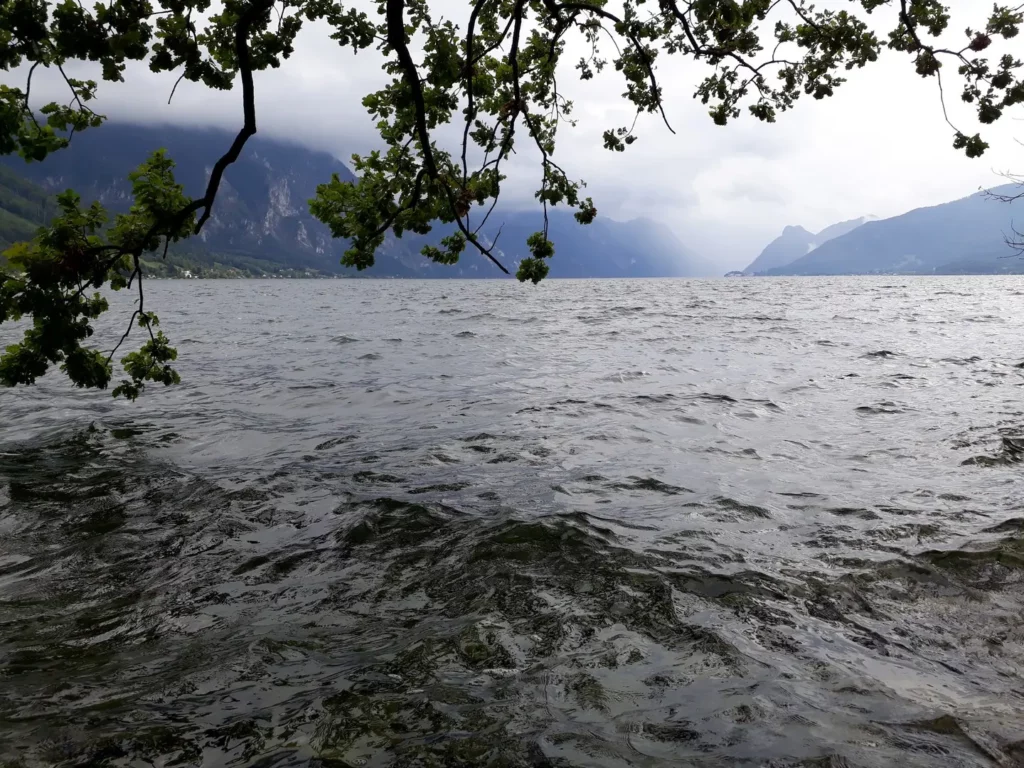

River Traun and on the other side of the river
Hier Traun is already a decent sized river and very picturesque. Somewhere downstream there should be a no less picturesque mill, but it is not close to go.
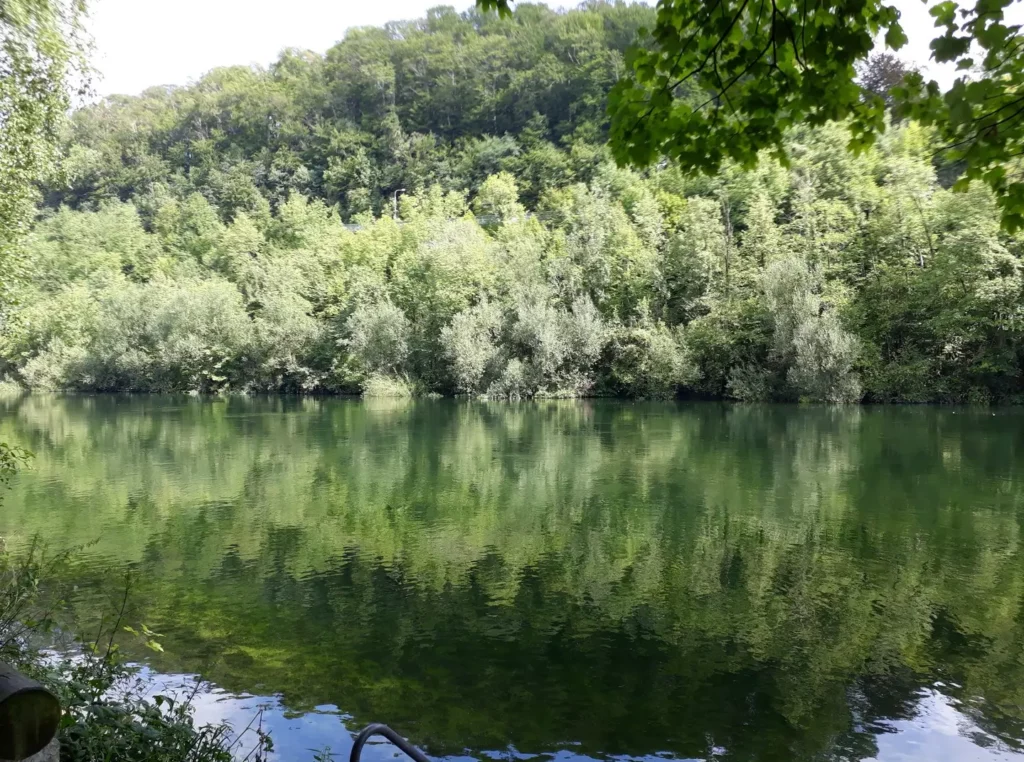
On the other side of the river there are some more old houses and a ceramics museum (not local, but from Meissen) in the Schloss Weyer castle (15th century). The castle itself is quite pretty, however it is privately owned, so the courtyard and the chapel can only be seen during events.
The embankment on the other side of the river is in the process of deep renovation. Most of the area near the shore is occupied by parking for guests of the city (in the old town with parking very bad) and for guests of the Grünberg cable car, which has recently been completely modernized.
Next – a day on Grünberg.
Do you enjoy the site without cookies? This means that I work for you at my own expense.
Perhaps you would like to support my work here.
Or change your cookie settings here. I don’t use personalized ads

